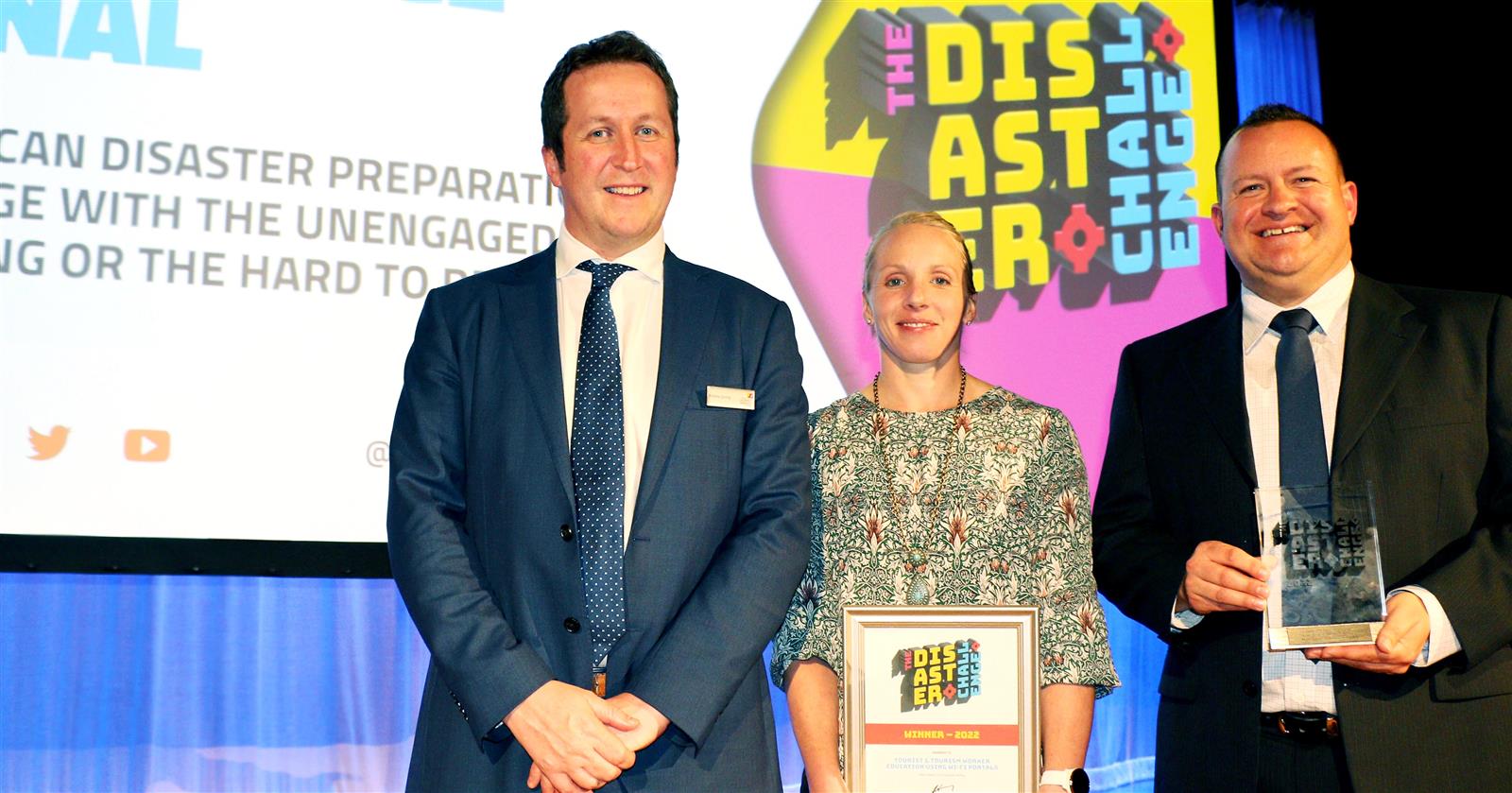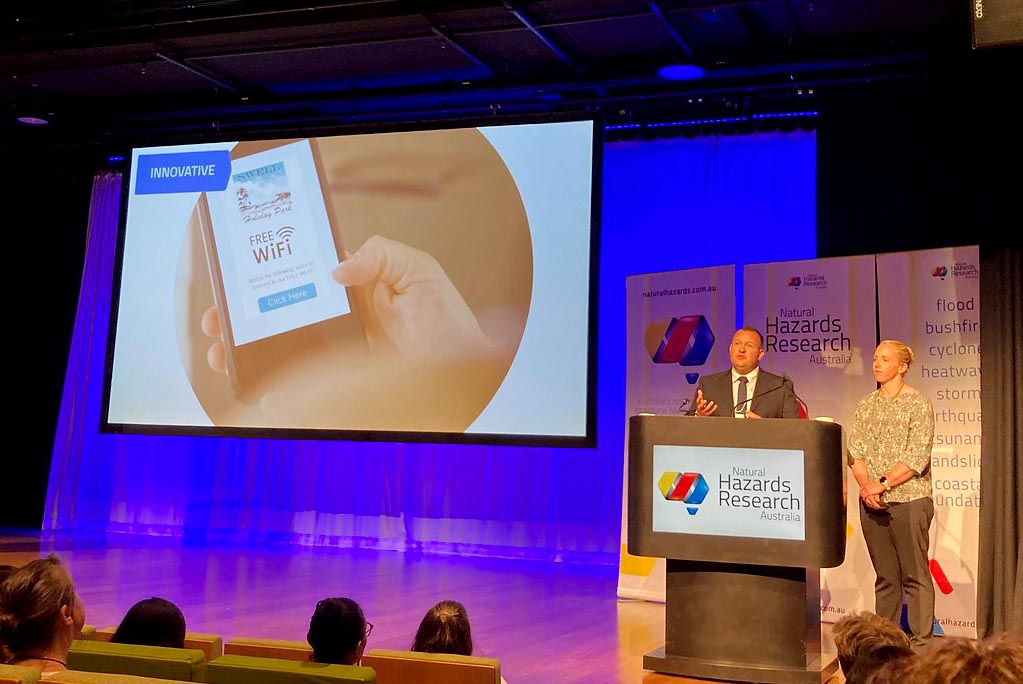 Natural Hazards Research Australia CEO Andrew Gissing, Dr Kamarah Pooley and Commander Mark Owens
Natural Hazards Research Australia CEO Andrew Gissing, Dr Kamarah Pooley and Commander Mark Owens
A CFA researcher has won Natural Hazards Research Australia’s inaugural Disaster Challenge with an innovative idea to provide tourists with localised disaster preparedness information.
CFA Alpine Commander and researcher Mark Owens together with Fire and Rescue NSW researcher Dr Kamarah Pooley developed the winning concept which uses free Wi-Fi hubs to provide tourists and tourism workers with localised disaster preparedness and prevention information.
The Natural Hazards Research Australia Disaster Challenge asked early carer researchers and postgraduate students to try to solve a ‘wicked problem’ in preparing communities for floods, fires and storms: how can disaster preparation engage with the unengaged, the moving or the hard to reach?
Three teams were selected as finalists, pitching their ideas to a judging panel of emergency management and disaster preparedness experts at the Natural Hazards Research Forum in Brisbane on 13 October.
Mark and Kamarah’s concept focuses on providing people with positive and practical information they can use while on holiday to stay safe from floods, bushfires, cyclones and other natural hazards.
Through Wi-Fi portals, visitors in flood or fire zones would be shown a video about what to do in the event of an emergency before they could log in to the internet at hotels, cafes or other destinations and locations.

Mark said it was fantastic to win the national challenge, particularly as it was the first time he and Kamarah had presented on the concept.
“Research shows that proactive messaging and positive reinforcement works more effectively for behaviour change in relation to disaster prevention and preparedness,” Mark said.
“With free Wi-Fi being essential for holiday makers, Wi-Fi portals provide an alternative way to provide people who are hard to reach through current communication channels with the vital information they need to make informed decisions during a natural hazard.
“Videos would include tips about how to access emergency information and what to do if a disaster struck – all customised to the local area and season.”
Mark said the concept had potential application for CFA particularly in areas with seasonal population growth where visitors and workers may have limited understanding of fire safety or likely hazards in the area.
“The great thing is the technology to roll out the concept is already in place and readily accessible,” Mark said.
“The next steps in taking this concept further will be determining the most effective messaging as well as how the videos can be standardised and made available for use across a broad range of facilities and agencies.”
Kamarah and Mark entered the challenge as early career researchers, having completed their PhD and masters within the past five years.
They will now be supported by Natural Hazards Research Australia to develop their concept further.
More information about the Disaster Challenge is available at disasterchallenge.com.au
| Submitted by |
Shaunnagh O'Loughlin |